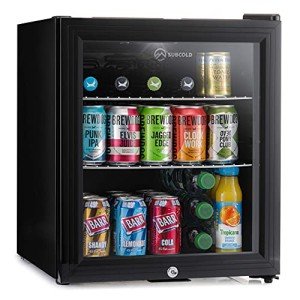The Role and Evolution of Commercial Coolers in the Modern Marketplace
In the dynamic landscape of modern commerce, the function of commercial coolers can not be overstated. These essential pieces of equipment are the backbone of various markets, from grocery stores and corner store to dining establishments and healthcare centers. This short article explores the significance of commercial coolers, their types, advancements, and the effect they have on organization operations.
Introduction to Commercial Coolers
Commercial coolers, also referred to as commercial refrigerators, are developed to keep a consistent and controlled temperature level environment for the storage of perishable goods. Unlike household refrigerators, commercial coolers are built to withstand heavy use and are geared up with functions that ensure dependability and performance in high-demand settings. They are essential for preserving the quality and security of food, beverages, and other temperature-sensitive products.
Kinds Of Commercial Coolers
Refrigerated Display Cases
- Vertical Coolers: Commonly discovered in grocery stores and convenience stores, these systems enable clients to view and choose products quickly.
- Horizontal Coolers: Often used for showing beverages and small items, these systems can be either open or with glass doors.
Walk-in Coolers
- Walk-in Freezers: Large, room-sized systems designed for bulk storage of frozen goods.
- Walk-in Coolers: Similar to walk-in freezers however maintain a greater temperature, suitable for saving dairy, produce, and other perishables.
Undercounter Coolers
- Bar Coolers: Compact systems developed to fit under bar counters, suitable for storing drinks and mixers.
- Prep Coolers: Used in kitchens for saving components and prepared foods.
Bottle Coolers
- Single-Door Coolers: Ideal for small spaces, these systems are frequently utilized in offices and small retail settings.
- Multi-Door Coolers: Larger units with numerous compartments, appropriate for high-volume sales environments.
Reach-in Coolers
- Single-Door Reach-ins: Compact and effective, these units are perfect for small companies and dining establishments.
- Double-Door Reach-ins: Offer more storage area and are suitable for medium-sized operations.
Improvements in Commercial Coolers
The technology behind commercial coolers has advanced significantly over the years, causing more efficient and sustainable alternatives. Some notable advancements include:
- Energy Efficiency: Modern coolers are designed to take in less energy, decreasing functional costs and ecological effect. Features like LED lighting, high-efficiency compressors, and advanced insulation add to this.
- Smart Technology: Many commercial coolers now include smart functions, such as remote tracking, temperature informs, and automated defrost cycles. These innovations boost functional efficiency and product security.
- Eco-Friendly Refrigerants: The use of eco-friendly refrigerants, such as R-290 (propane) and R-600a (isobutane), is ending up being more common, lowering the carbon footprint of commercial coolers.
- Customization: Manufacturers are providing more adjustable choices, allowing services to tailor their coolers to specific requirements, such as size, style, and functions.
Effect On Business Operations
Commercial coolers play a crucial role in numerous aspects of service operations:
- Product Preservation: By keeping ideal temperature conditions, coolers make sure that products remain fresh and safe for consumption, minimizing waste and improving client satisfaction.
- Functional Efficiency: Efficient cooling systems lessen downtime and upkeep expenses, permitting businesses to focus on other important operations.
- Customer Experience: Well-maintained and visually pleasing coolers can enhance the shopping experience, motivating customers to make purchases.
- Regulative Compliance: Commercial coolers help businesses fulfill health and security policies, ensuring compliance and avoiding penalties.
Frequently asked questions
Q: What is the distinction between a commercial cooler and a family fridge?
- A: Commercial coolers are developed for heavy usage and are built with more robust materials and advanced features to guarantee dependability and performance in high-demand settings. Family refrigerators, on the other hand, are created for personal usage and are not geared up to handle the same level of use or storage capacity.
Q: How can I guarantee my commercial cooler is energy effective?
- A: To ensure energy performance, pick a cooler with an Energy Star rating, use LED lighting, keep regular cleaning and upkeep, and consider clever functions like remote monitoring and automated defrost cycles.
Q: What are the advantages of utilizing eco-friendly refrigerants in commercial coolers?
- A: Eco-friendly refrigerants, such as R-290 and R-600a, have a lower worldwide warming capacity (GWP) and ozone exhaustion potential (ODP) compared to conventional refrigerants. Modern Drinks Refrigerators reduces the environmental impact of commercial coolers and assists companies fulfill sustainability objectives.
Q: How often should I clean up and preserve my commercial cooler?
- A: Regular cleaning and maintenance are vital for the optimum performance of commercial coolers. It is advised to clean up the cooler at least as soon as a month and perform an extensive upkeep check every six months. This consists of inspecting the seals, cleaning up the condenser coils, and guaranteeing the temperature level settings are accurate.
Commercial coolers are important in the modern marketplace, providing important services that guarantee the quality and safety of perishable items. With improvements in technology and a growing concentrate on sustainability, these units are ending up being more effective and environmentally friendly. By comprehending the various types of commercial coolers and their impact on organization operations, owners and supervisors can make informed decisions that benefit both their operations and the environment.

